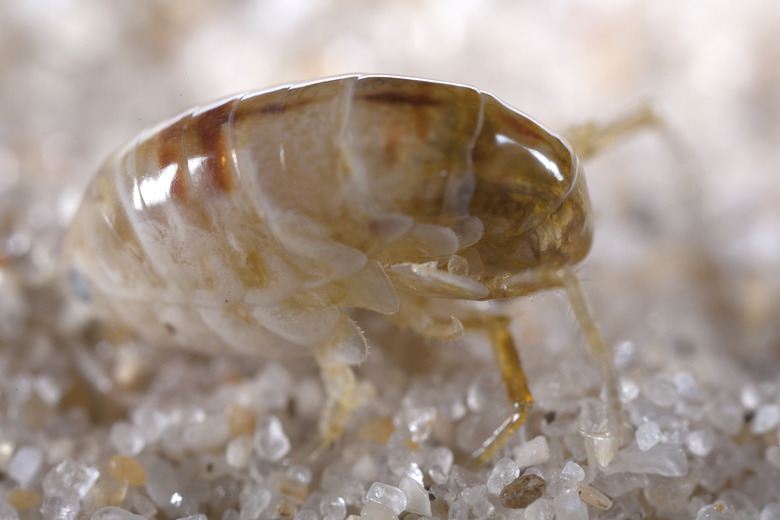What Color Are Sand Fleas?
The name sand fleas actually refers to an entire genus of organisms. The genus Emerita encompass a type of animal in the order Decapoda that include a variety of crustaceans with 10 legs (which makes sense since "Decapoda" literally translates to "10 feet").
Within this genus are 10 different and distinct species of sand flea. Each of these sand mites have slightly different looks, colorizations, habitats and behaviors.
What Are Sand Fleas?
What Are Sand Fleas?
As previously stated, the term sand flea is actually a general term. These organisms are also called sand mites, sand bugs, mole crabs, sand ticks and sand crabs. Despite a few of those names, they're actually not arachnids or insects and the term "sand crab" is actually the closest to the truth. They're sometimes known to bite humans, which is likely where the term "sand flea" arose from.
The genus Emerita is under the order Decapoda and the family Hippidae. This means that they're closely related to other similar crustaceans like crabs, lobsters, crayfish and shrimp. Other genera, including the genus Hippa, are also considered to be sand fleas as well.
Sand Flea General Information
Sand Flea General Information
Emerita species are known for burrowing beneath the sand. They're known to burry their tail end first, which makes them unique compared to other burrowing crustaceans such as some species of shrimp. These tiny crab-like creatures can burrow under the sand in 1.5 seconds or less. They make themselves at home in the sand of beaches near marine environments.
There are 10 distinct species of sand fleas that can range from microscopic in size to about 1.5 inches long. Species are found along both United States' coasts, along the western coast of Africa. They all have bodies shaped like barrels that look similar to "pill bugs." Their exoskeletons are hard and tough and allow them to curl into a ball (also similar to pill bugs) so they can roll in and out with the tides.
They use their feather-like antennae in order to filter feed. Many fishermen use these creatures as bait for perch and other types of commercially caught fish. They're also sometimes eaten by people, although this isn't common in the United States.
Sand Flea Colors
Sand Flea Colors
As with many types of animals, juvenile and adult sand mites have slightly different coloration. Juvenile sand fleas are usually slightly darker than their adult counterparts with their color ranging from dark brown to black with some appearing as more lightly tan. Adult sand fleas tend to be lighter in their coloration with the darkest species looking a darker tan while others are white, beige and even translucent.
This coloration allows the sand fleas to easily blend into their sandy habitats, which helps them stay camouflaged and avoid predation. Scientists notice that color tends to match closely to the sand of the beaches where they live. This is especially true with species that appear translucent since you essentially just see through their bodies to the sand below.
An Interesting Case
An Interesting Case
There's also evidence that certain species of sand fleas may be able to change their color based on where they are. Scientists studying the closely related Hippa testudinaria, which is also referred to as a sand flea, found that the exact same species turns dramatically different colors based on the sand that it's living on. They can even match various patterns of the sand/rocks that are on those particular beaches.
The phenomenon isn't uncommon. Many organisms evolve to have camouflage to match their environment. Most camouflage adaptations are genetic in nature.
Scientists believe that this case is a bit different, though. Each of the different colors of Hippa testudinaria species are thought to be genetically identical and have simply evolved a mechanism that allows them to adjust their coloration based on where they wash ashore.
Cite This Article
MLA
Walsh, Elliot. "What Color Are Sand Fleas?" sciencing.com, https://www.sciencing.com/what-color-sand-fleas-4611510/. 22 November 2019.
APA
Walsh, Elliot. (2019, November 22). What Color Are Sand Fleas?. sciencing.com. Retrieved from https://www.sciencing.com/what-color-sand-fleas-4611510/
Chicago
Walsh, Elliot. What Color Are Sand Fleas? last modified March 24, 2022. https://www.sciencing.com/what-color-sand-fleas-4611510/
